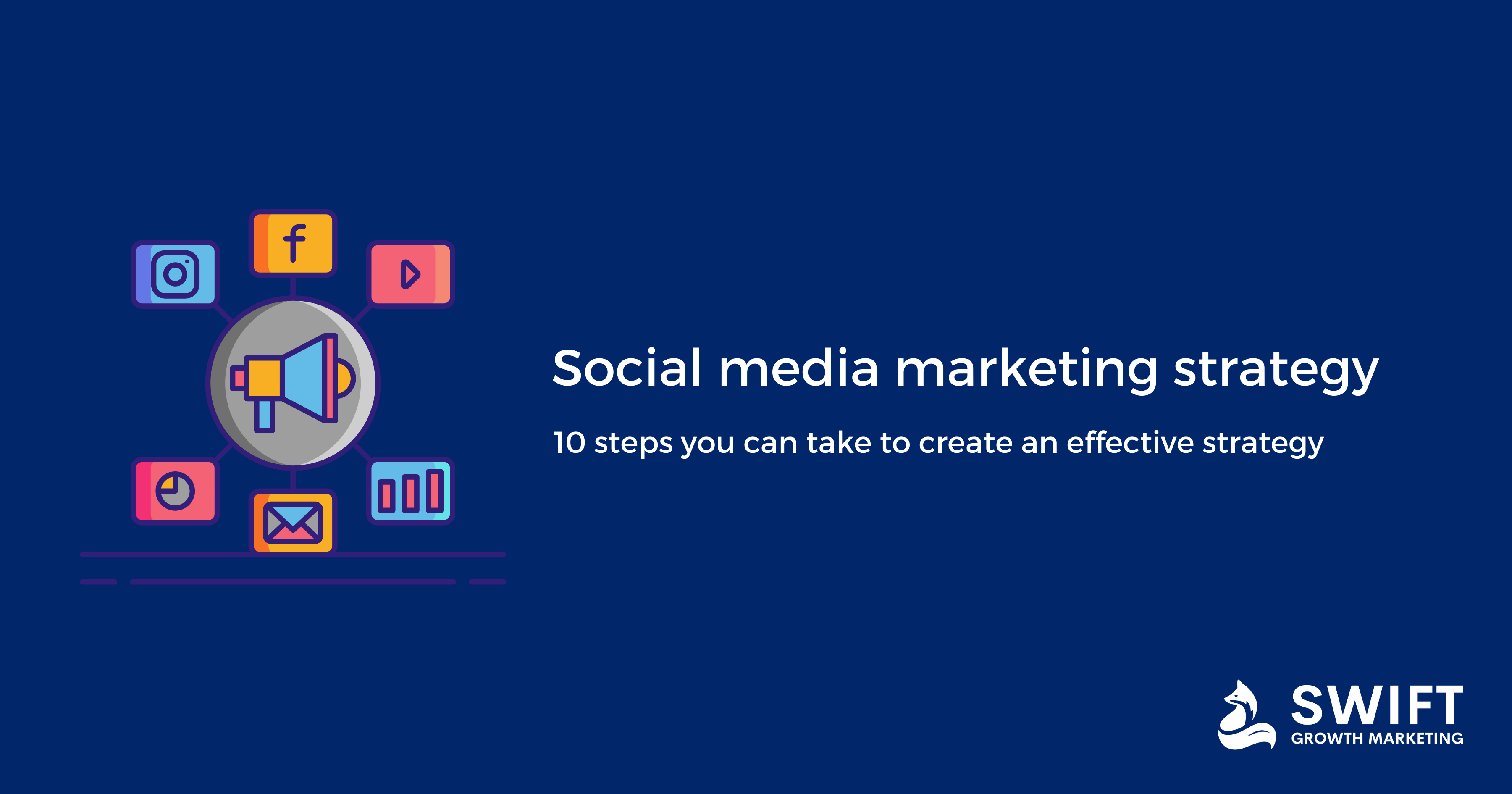
Everyone knows that social media marketing works. However, a few random posts will not bring you results. Instead, a social media marketing strategy needs to be developed to get the right message to the right people. But where do you start the process of creating a social media marketing campaign? Here is a 10-step guide to creating social media marketing strategies that work.
1. Set Your Goals
One of the most common mistakes people make with social media marketing is not defining goals. Consequently, they tend to post content merely to fill space instead of to achieve an objective. So step one is to think about what you want to achieve. Do you want more followers, for example? Do you want to connect with customers or create new sales leads? Setting quantifiable goals will help you develop relevant content and provide a means to measure the effectiveness of campaigns.
2. Understand Your Target Audience
It will help to know whom you are talking to on social media. You can’t, of course, get to know every individual. Nevertheless, you can create a persona of a typical member of your target audience. You can identify the demographics of a regular customer, for example. You can find out what concerns and interests them. You can also find out where your target audience spends time online and what type of content appeals to them. This information will help you target your social media advertising and marketing.
3. Decide on Your Brand Message
Consistency is crucial in social media marketing. It’s best to consider the message you want to send and the personality you wish to convey before posting any content. Would a youthful character and a playful nature resonate with your audience or alienate them? Are special discounts and low prices going to attract customers, or is consistent quality the key to more sales?
4. Identify the Best Platforms
There are hundreds of well-frequented social media platforms. Each of these platforms attracts a slightly different audience and requires different types of content. Consequently, it’s best to research the various social media sites to determine which your target audience uses and which would best suit your brand message.
5. Optimize Social Media Profiles
The content and formatting options on social media profiles may be limited. Nevertheless, people must gain an excellent first impression when visiting your accounts. And visitors must know what to do next if they want to learn more about your brand. Take your time setting up social media profiles. Adopt consistent branding across all platforms, use all the available fields, and include calls to action.
6. Research Platform-Specific Content
Social media platforms are not all the same. The audiences differ, as does the type of content required for each one. Therefore, it’s advisable to familiarize yourself with any social media platforms new to you before creating and posting content. Look at the general tone of other people’s posts that have generated a great deal of engagement, for example. Research what is trending on the site, and check out a few of the accounts with high numbers of followers to see what type of content they have posted.
7. Plan Strategic Activities
Social media marketing requires planning. You cannot merely post content and hope for the best. Instead, you must engage with your audience and become a part of the community. The best way to achieve that is to plan your use of social media. Set aside a specific time of day to interact with users, for example. And decide who in your organization will be responsible for responding to comments, following other users, and sharing other people’s content. These activities will help establish you as an active platform user rather than merely an advertiser.
8. Schedule Content
It will maintain consistency if you create a schedule of posting activity for each platform. Each scheduled item should include the topic, planned posting date, and the individual responsible for creating the content. Consideration should also be given to the purpose of each post. This level of detail will help you plan a cohesive posting strategy and prevent posting “something” for the sake of filling a spot on the posting schedule.
9. Locate and Engage with Influencers
There invariably will be influencers who can assist you with your social media marketing campaigns. These individuals will have already gained a significant following and be an authority in your niche. Following influencer accounts will enable you to track trending topics in your market. If you strike up a relationship with an influencer, they may also share some of your content. You may also want to consider paid influencer marketing campaigns if this approach is acceptable in your sector.
10. Monitor and Refine
You won’t know what works until you try. Indeed, some of your most successful posts might even surprise you. It is advisable to monitor metrics like follows, shares, comments, and conversions. Tracking results will enable you to refine future posts and increase the success of your social media marketing campaigns.
Conclusion
Following the above steps will help ensure that your social media campaigns are well-considered and planned. Hopefully, it will help you reach the right people with the right message. The crucial point to remember is that research, planning, and monitoring are at the heart of every successful social media marketing campaign.

